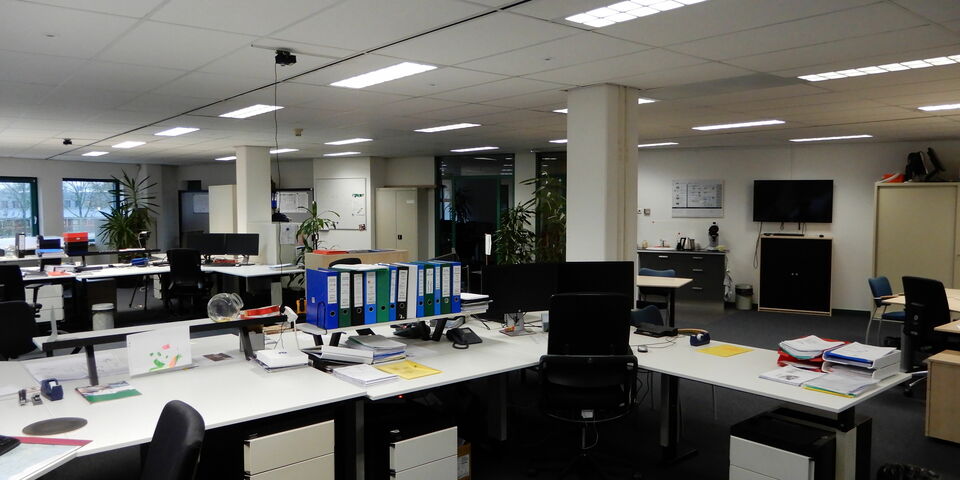Saving energy without compromising on user comfort
Increasingly, employees share a large open office with flexible workplaces and working hours, leaving many desks vacant for large parts of the day. But the lighting is still on the whole day, in the whole office. Smart lighting with motion detectors can significantly reduce energy consumption in offices, but when light sources are frequently switched on and off, this becomes unpleasant and distracting. Researcher Christel de Bakker has developed a method to set the lighting in such a way that the lighting energy consumption is reduced by more than 25%, without compromising user comfort.
De Bakker's research comes at an opportune time. By 2023, all Dutch office buildings must have a minimum energy label C. Lighting takes up to 15% of the entire energy consumption of an office building, while the light is often on in places where no one is working at that moment. Presence sensors can ensure that the light is only switched on over occupied desks. But the large contrast of light between an occupied and an unoccupied desk turns out to be unpleasant. In addition, employees are distracted by the ever-changing light intensity.
Dimming on three levels
In order to find out the best lighting strategy for employee comfort, De Bakker set up two darkened research areas of different sizes as an office. She then asked the subjects, 95 in total, to set the lighting in a way that felt comfortable. Using these results, she then tested the lighting set-up that had been most frequently chosen in a real open office, and asked the employees there, 20 in total, to evaluate the lighting conditions. De Bakker: "The test subjects were not able to switch off the light completely in these experiments because earlier research showed that this caused unpleasantly large light contrasts in the area. So employees could only dim the light."
De Bakker discovered that an office with three light levels is the best strategy. If an office worker is working alone in a medium-sized open-plan office, the desk at which the user is working should be fully lit. The lamps above the three surrounding desks may be slightly dimmed (35-65 cd/m2), and the lighting in the rest of the room may be dimmed even more (20-50 cd/m2). De Bakker calculated that this would enable you to save more than 25 percent of the energy consumption for lighting in a medium-sized office. The size of the space appeared to be important for perception. "If you work in a large room, you will feel like you want to know what is going on in the background, so the backlight has to be set more brightly," says de Bakker.
Luminance Meter
De Bakker does see significant differences in individual preferences. A combination of locally set preferences per desk, supplemented by a standard lighting plan for the entire room, is therefore the best solution: "People still want to adjust the light at the beginning of the working day, but they quickly forget about it during the day.”
De Bakker, who has been awarded her PhD on June 4th, hopes that her plan will be put into practice. But this requires a luminance sensor. "In my research I have focused on the luminance (cd/m2) instead of the more common illuminance (lux). Luminance is the brightness experienced by the observer, and also includes the reflection of light on objects, for example. Therefore it is a better measurement method to determine the perception and comfort of the employee," says De Bakker. Unfortunately, today's smart lamps are currently only equipped with a lux meter. Her fellow PhD student Thijs Kruisselbrink is therefore developing a luminance meter. He's now halfway through his PhD research.


Discussion